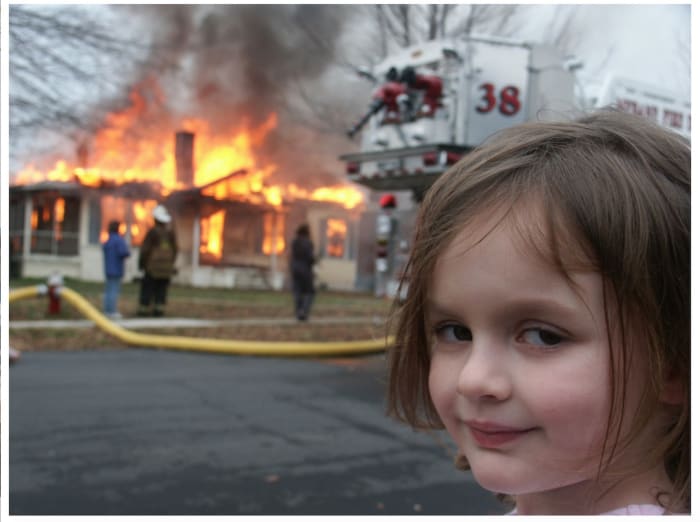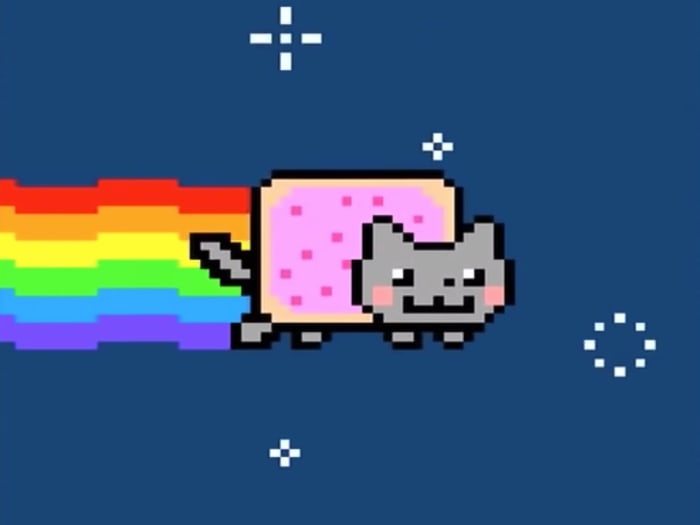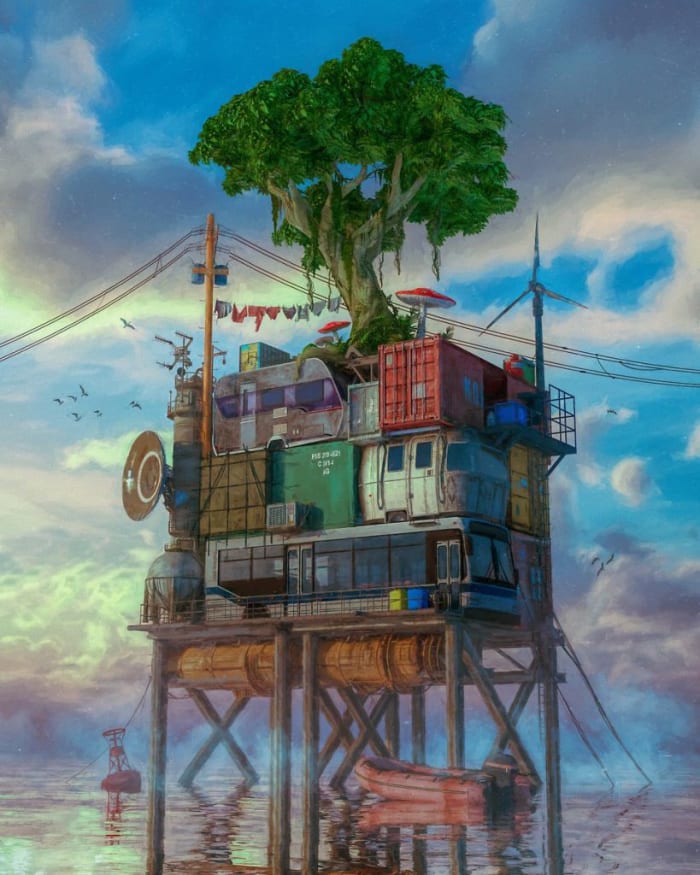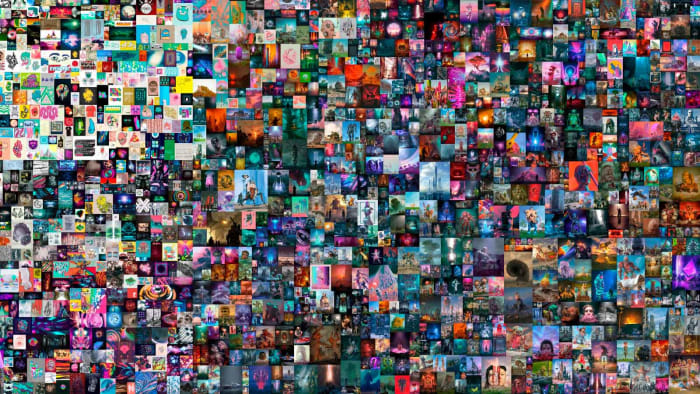Since NFTs (Non-fungible Tokens) burst into the mainstream last March with the $69 million sale of Everydays – The First 5000 Days by the artist Beeple, there isn’t a day that has passed that I have pondered: What exactly is an NFT? How could an NFT be worth so many millions of dollars, and who on earth has enough cash to throw at something so … so… intangible?
Furthermore, why on earth would they do it?
Putting my endless pothering, head-scratching and divining-of-motives aside, looking at NFTs through the lens of the past 50 years of trends in collectibles that have gained and lost value – some rising to the stratosphere (Comics? Baseball cards?) and some into obscurity (Beanie Babies?) – the questions that keep coming up for me are these:
- Are NFTs unique as a collectible?
- Do they require a re-thinking of what a collectible is?
- Do they force the hobby (and therefore the business) to look at itself and its future in a different way?
The answer is easy to all three: Yes. We could wrap it up there and go home, no matter what the outcome. Anything that prompts critical introspection and change is good, right? Who cares what it’s worth 100 years from now. However, all of us being smart people, let’s dig a little deeper.

In 2005, four-year-old Zoe Roth was photographed by her dad in front of a burning house with a devilish grin that suggested she had something to do with the fire. The image was endlessly repurposed as a vital part of meme canon. An NFT of ‘Disaster Girl’ sold for nearly $500,000.
Dave Roth
An NFT is a unit of data stored on the blockchain – that great confusing digital behemoth – that certifies a digital asset to be wholly unique and not interchangeable like, say, a bar of gold or a $100 for five $20s. Right now it applies to photos, videos, audio and most any kind of digital file. The market for NFTs, overall and outside of collectibles, is like the Wild West, with prices based on whatever the market will bear.
By their very definition, when applied to this pursuit we all love and follow, they are absolutely unique as collectibles. Also, by their very definition, NFTs require a re-thinking of what a collectible is.
When you buy a comic book at auction, it comes to you in a hermetically sealed plastic holder. You can gaze upon it any time you wish, reveling in the sheer physicality of it and the fact that you have it. This applies to whatever it is you collect. The rush is in the win and in the possession.
When you buy an NFT you get … well … You get a unique unit of data stored on the blockchain, which you can then download into your digital wallet and show off to your friends and family, or those fellow collectors who care – much like a comic book, or a baseball card or a painting. Except there’s nothing physical to hold or touch.

Chris Torres created Nyan Cat in 2011. An NFT of the wildly popular meme of the pixelated, Pop-Tart body cat flying across space leaving a rainbow trail in its wake sold for roughly $580,000 in February 2021.
Image courtesy Chris Torres
“Some people collect art, some sports, some comics,” said Taylor Curry, Consignment Director in Modern Art, and NFT expert, at Heritage Auctions. “It’s just a different conceptual idea. It’s validation. With art you can show you can own it. You can send your NFT to your Ethereum wallet and show that you own that wallet and that NFT.”
Heritage, a company that has always been quick to innovate and adapt – thanks in large part to co-founder and resident futurist Jim Halperin – moved quickly into world of NFTs when it saw the continued sky-rocketing prices on NFT platforms. They now offer NFTs in both their art categories and their sports categories in the form of NBA NFTs, though it’s a good bet that will continue to evolve as long as collectors will spend on them.
“With NBA NFTs it’s a closed system on a website called Top Shot, where the NFT itself stays on the site, though the collector can download it and show it off as they please,” said Mike Provenzale, Heritage’s resident sports NFT expert. “It’s a flex, really. Whether your NFT is one of one or one of a 1,000, it’s simply a matter of showing ownership of a desirable highlight (think: an iconic LeBron James or Kobe Bryant moment) that you can either keep or try and sell.”

Mike Provenzale of Heritage Auctions, an early player in the NFT market.
Image courtesy Heritage Auctions
The NFT movement in sports, said Provenzale, is just beginning.
“You can bet that all the other pro sports leagues are seeing what the NBA is doing,” he said, “and scrambling to figure out how to get it done themselves.”
In fact, Heritage’s Sports Department was making news for its NFT sales even before Christie’s saw the $69 million price tag for the Beeple piece, realizing more than $300,000 for a LeBron James highlight in February.
This brings us to the third point, which is whether or not NFTs are forcing the hobby of collecting as a whole, and therefore the business of the whole of collecting, big, little and in-between, to look at itself and its future in a different way? The answer here, too, is unequivocally, yes.

CryptoPunks are 10,000 uniquely generated characters. No two are exactly alike, and each can be officially owned by a single person. undefinedLarva Labs, ‘CryptoPunk #7523,’ a masked alien digital punk sold for $11.75 million at Sotheby’s first curated NFT sale in June 2021.
Image courtesy Larva Labs
Through all of this, the one thing that seems clear is that the true divide is really a generational one. There are plenty of forward-thinking art and memorabilia collectors of all ages, but ultimately the digital divide between the generations holds true. What will ultimately decide the fate of NFTs and Pure Digital as a viable art form will be Millennials and Gen-Z and whoever follows.
“I’m totally comfortable with the digital form,” said Heritage’s Curry. “There’s seems to be some generational divide. There’s 2-3 billion hardcore gamers worldwide that spend a lot of time and money in the purely digital realm. I can easily imagine they would rather have a digital art piece.”
Curry also points out that NFTs have moved, at least for now, from a curious sub-category to legitimacy.
“The challenge,” he said, “is seeing beyond the hype to what comes next.”

The so-called ‘Overly Attached Girlfriend’ image went viral in 2012 with people worldwide creating memes centered around Laina Morris’ parody of a clingy and creepy girlfriend. The NFT sold for $411,000 in April.
Image courtesy Laina Morris
As for the insane prices being realized for high-end NFT artwork, Curry also urges the curious to put it in perspective. We are still in a time of crazy startup money and CryptoCurrency. The NFTs selling for tens of millions of dollars are being paid for in Ethereum, a digital currency much like BitCoin.
“A lot of people are just crypto-rich,” Curry said. “For them to spend $69 million in Ethereum … It looks like a lot of money, but for someone with thousands of Ether, it’s just a drop in the bucket.”

Beeple’s ‘Ocean Front,’ a climate change alarm, sold for $6 million in March.
Image courtesy of Beeple
One more head-scratcher amidst the hundreds of others concerning this new form. What does it all mean? Ultimately, right now, your guess is as good as mine.
Four years ago, with the release of the now famous and very expensive Cryptokitties (unique NFT digital avatars), followed by the more famous CryptoPunks, the digital genie was released. It won’t be going away soon, but it’s way too soon to know if NFTs are here to stay, or what their ultimate value will be. It all just begs more questions and will bear keeping a close eye on the market and the future.
It’s the Wild West out there in NFT Land. As unpredictable as it may be, and as difficult as it may be to make philosophical sense of, it’s a great deal of fun and I can’t wait to see where it takes this wonderful hobby.

The NFT that left the art world dazed and confused: ‘Everydays—The First 5000 Days,’ by the artist Beeple, which sold for $69.3 million in March 2021 at Christie’s. A new, volatile, collecting world was born.
Image courtesy Christie’s
NFT Resources
The subject of NFTs is simply too big to fully cover in a single take. Each answer begs numerous questions: How do I buy an NFT? Where do I buy an NFT? How do I sell an NFT once I have one? Can I make NFTs on my own? Can I sell them? Do I need digital currency to do so? How do I get that? What rights do NFTs give me concerning an image? Here are a few resources that can get you started:
1. Andreessen Horowitz (known as “a16z”) offers a wonderful clearinghouse for a variety of articles, many looking at NFTs from a collecting angle. Go to www.a16z.com
2. Go here for a nice, in-brief overview of what NFTs are and how the market works. The beginners guide is a great place to start at Decrypt, a website established in 2018 to demystify the decentralized web.
3. Florida International University, Miami, provides simple explanations and access to a host of great articles that can help untangle the NFT knot. Start here.
You May Also Like:
Pokémon Craze Grips Frenzied Collectors








